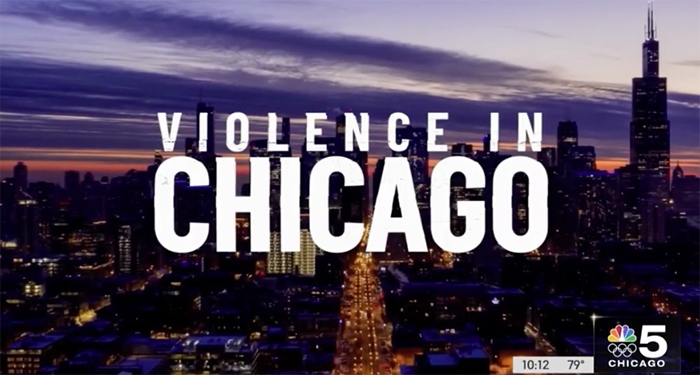
(Image: NBC Chicago)
NBC 5 Chicago’s latest “Violence in Chicago” segment, which examines disinvestment in city neighborhoods, features findings from a 2017 UIC Great Cities Institute report on youth joblessness.
Full story from NBC 5 Chicago »

(Image: NBC Chicago)
NBC 5 Chicago’s latest “Violence in Chicago” segment, which examines disinvestment in city neighborhoods, features findings from a 2017 UIC Great Cities Institute report on youth joblessness.
Full story from NBC 5 Chicago »
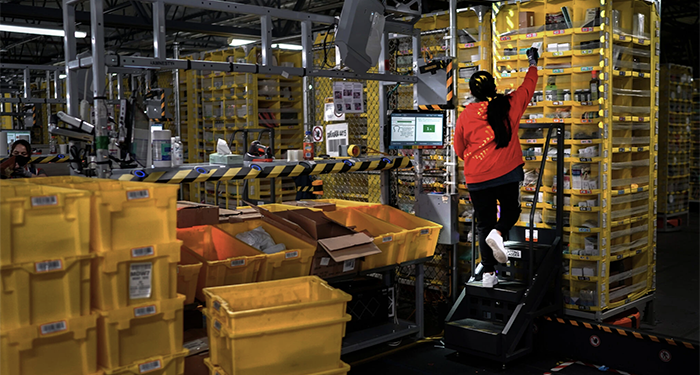
(Image: Chang W. Lee / The New York Times)
A New York Times article about a new California law that requires warehouses like Amazon to disclose quotas and work speed metrics to employees and government agencies includes comments from Beth Gutelius, research director for the Center for Urban Economic Development at UIC and senior research specialist with the Great Cities Institute at UIC, who says the legislation is unprecedented as it mediates the ways that technology is used in the workplace.
“I believe one of Amazon’s biggest competitive advantages over rivals is this ability to monitor their work force, prod workers to work faster and discipline workers when they fail to meet quotas,” said Beth Gutelius, research director at the Center for Urban Economic Development at the University of Illinois Chicago.
“It’s unprecedented for a bill to intervene like this in the ways that technology is used in the workplace,” added Dr. Gutelius, who focuses on warehousing and logistics.
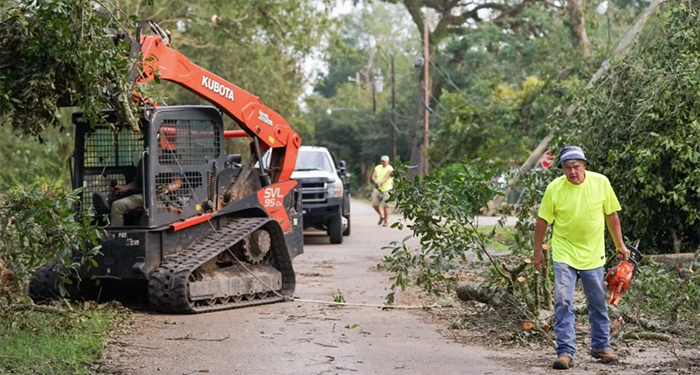
Image: Sean Rayford / Getty Images
Nik Theodore, UIC professor and head of urban planning and policy, director of the Center for Urban Economic Development and fellow at the Great Cities Institute, is quoted in an online story from NBC News on the booming business of disaster recovery due to increasing weather and climate events.
It can be a grueling and dangerous job. In the first weeks after a natural disaster, government agencies are often stretched or have broken down leading to confusion, even chaos, on the ground, said Nik Theodore, a professor in the University of Illinois Chicago’s Department of Urban Planning and Policy. While some companies bus in their own crews, many contractors use social media to find workers or pick up day laborers, often in front of hardware stores, he said. Such ad hoc strategies can lead to wage theft and makes it difficult for workers to recover pay.
“The disaster recovery zone becomes the Wild West, where a lot of rules go out the window,” he said.

Image: Mary Hall, Katherine Nagasawa / WBEZ
In an online story from WBEZ, Jim Lewis, a senior research specialist with UIC’s Great Cities Institute, offers insight on the process and laws surrounding the remapping of Chicago’s aldermanic ward boundaries.
“Every 10 years, we learn from the census what the population of different places is. … We learn that people have moved, people have been born, people have died,” said Jim Lewis, a senior researcher at the University of Illinois at Chicago Great Cities Institute. “And so what was the same size 10 years ago is no longer the same size today.”
“There’s no law that says they have to be racially balanced — that only comes into play if you don’t do it, and somebody sues you,” Lewis said.
“Because of where people happen to live, it isn’t always easy,” Lewis said. “If you draw a checkerboard of the city, you wouldn’t get the racial ethnic representation that would represent the democratic proportions of different racial groups. And the reason is that in different parts of the city, different groups live in different concentrations. … You are going to have to draw some wards that are not squares or circles.”
“And there’s nothing in state or local law that says you can’t draw districts to favor particular incumbents or favor political parties,” Lewis said.
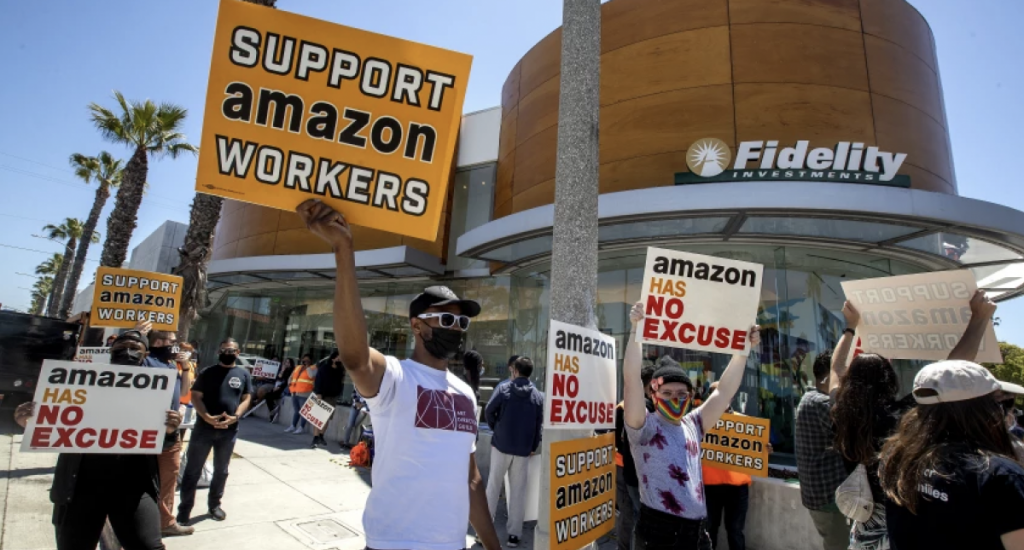
(Image: Mel Melcon / Los Angeles Times)
Beth Gutelius, research director for the Center for Urban Economic Development at UIC and senior research specialist with the Great Cities Institute at UIC, addresses warehouse work surveillance in comments featured in a Los Angeles Times article on proposed California legislation that would require warehouses like Amazon to disclose quotas and work speed metrics to employees and government agencies.
“In the U.S., we are at an inflection point on the question of how technologies are used in workplaces and what rights workers have to data collected about them,” said Beth Gutelius, research director at the University of Illinois at Chicago’s Center for Urban Economic Development and an authority on logistics.
Analysis from Matthew Wilson, senior research specialist with the Great Cities Institute, is featured in a Bisnow article on U.S. Census Bureau figures and trends in Chicago.
GCI Director Teresa Córdova was the guest host for the sixth and final podcast in The Sawyer Seminar, a series of conversations hosted by UIC scholars sponsored by AirGo and UIC’s Social Justice Initiative. She is joined by José Bravo, the Executive Director of Just Transition Alliance, and José Acosta-Cordova, the Environmental Planning and Research Organizer at LVEJO. The trio breaks down how the work has shifted over the last thirty years, some of the false solutions to climate change that are being proposed, and the value of multigenerational organizing in the Environmental Justice movement.

(Image: The American Prospect)
Beth Gutelius, research director for the Center for Urban Economic Development at UIC and senior research specialist with the Great Cities Institute at UIC, is a featured expert in an article from The American Prospect magazine that looks at the current state of staffing in the warehouse industry.
“People like to talk about warehousing as a replacement for manufacturing,” says Beth Gutelius, a researcher at the University of Illinois at Chicago. “But it’s not a production function like a factory; it’s a circulation function. It doesn’t create goods, it moves them.”
“The profit margins in warehousing as a circulation activity are very tight, so employers look for ways to cut costs, and labor cost is often the first place they look,” Gutelius continues. “Without power, like the unions that were built in manufacturing, frontline workers are forced to absorb this pressure on profit margins by accepting lower wages and worse working conditions.”
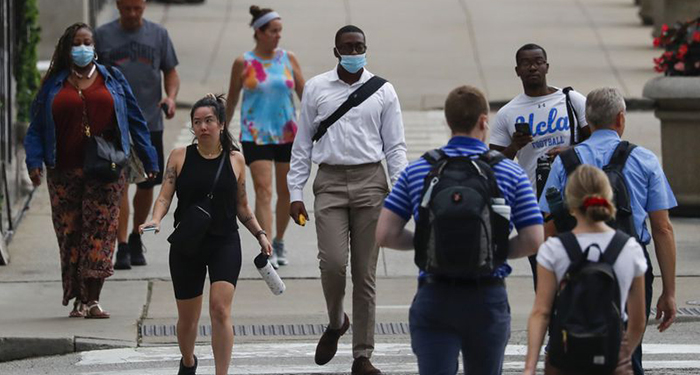
(Jose M. Osorio / Chicago Tribune)
In a story from the Chicago Tribune, Rob Paral, senior research specialist with UIC’s Great Cities Institute, addresses Chicago and suburban population rates from the 2020 census.
Rob Paral, a researcher with the Great Cities Institute at the University of Illinois Chicago, called the results showing Chicago’s population gain a “good census” for the city, noting that it bucked expectations from previous surveys that predicted population losses.
“Some of the narratives we have of decline haven’t really been that accurate,” Paral said. “The suburban portion grew too — barely — but it held its own.”

Katherine Nagasawa / WBEZ
Rob Paral, senior research specialist with UIC’s Great Cities Institute, joined WBEZ’s “Reset” for a segment on the process of redrawing Chicago’s ward maps and what is at stake.